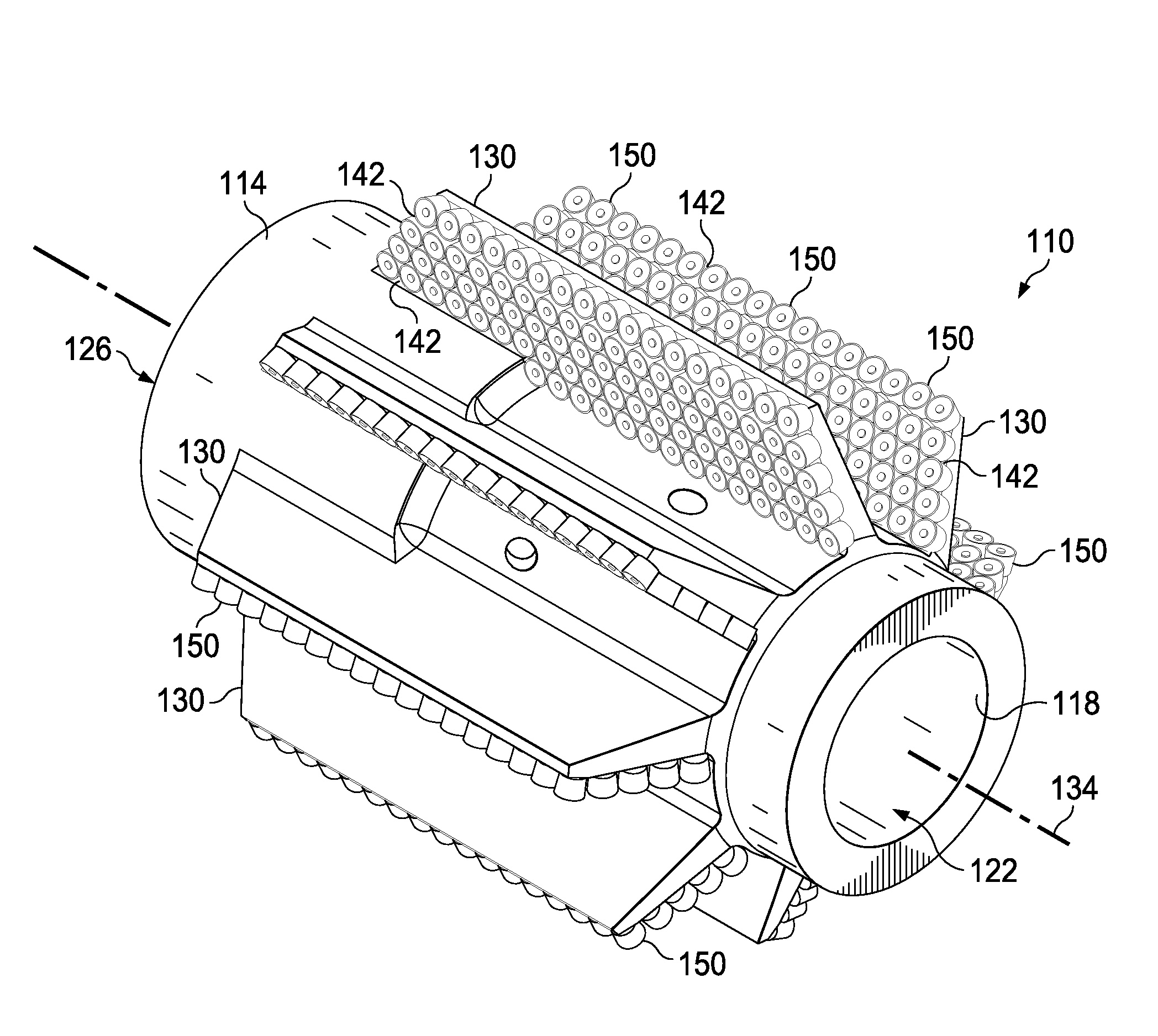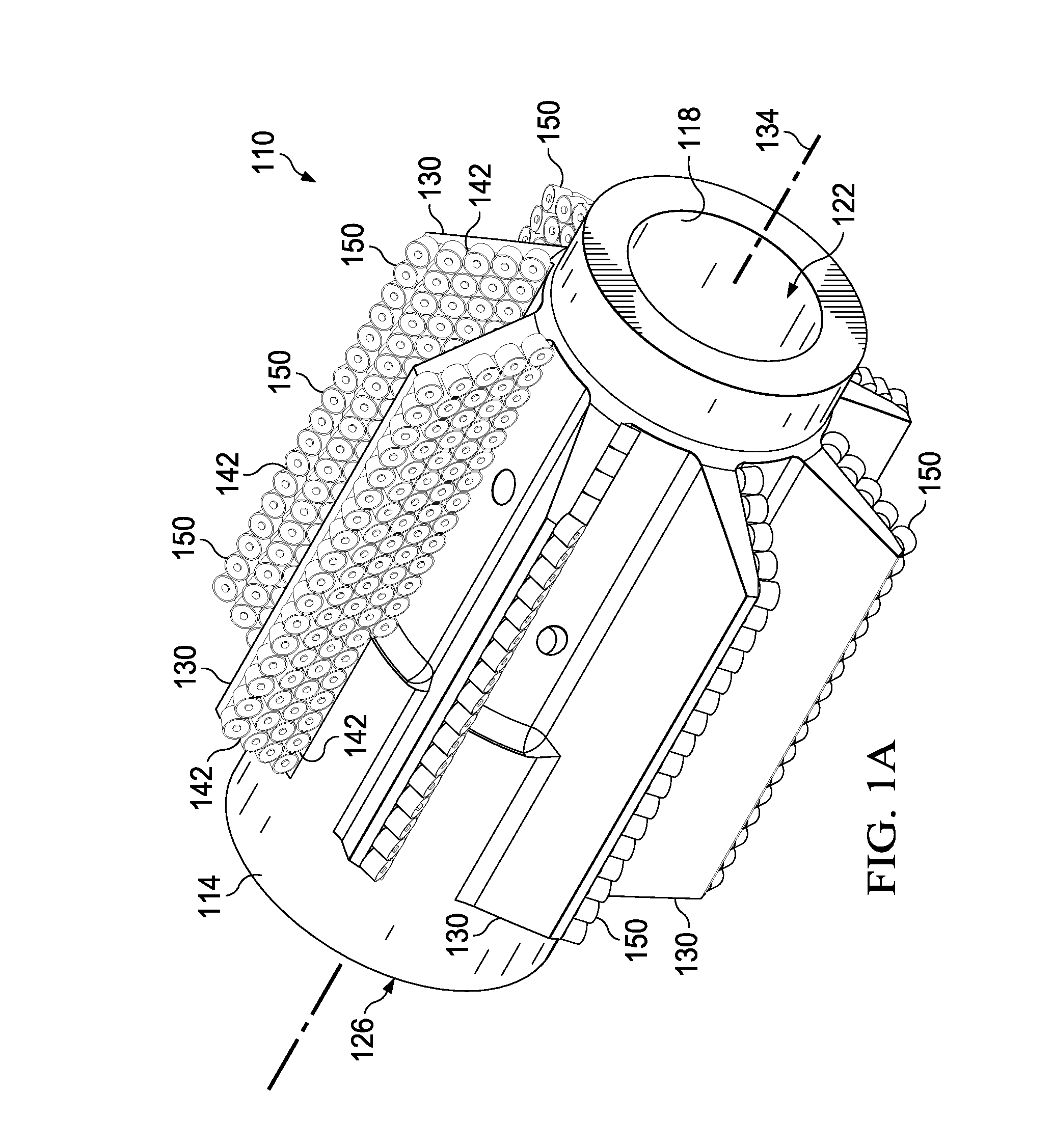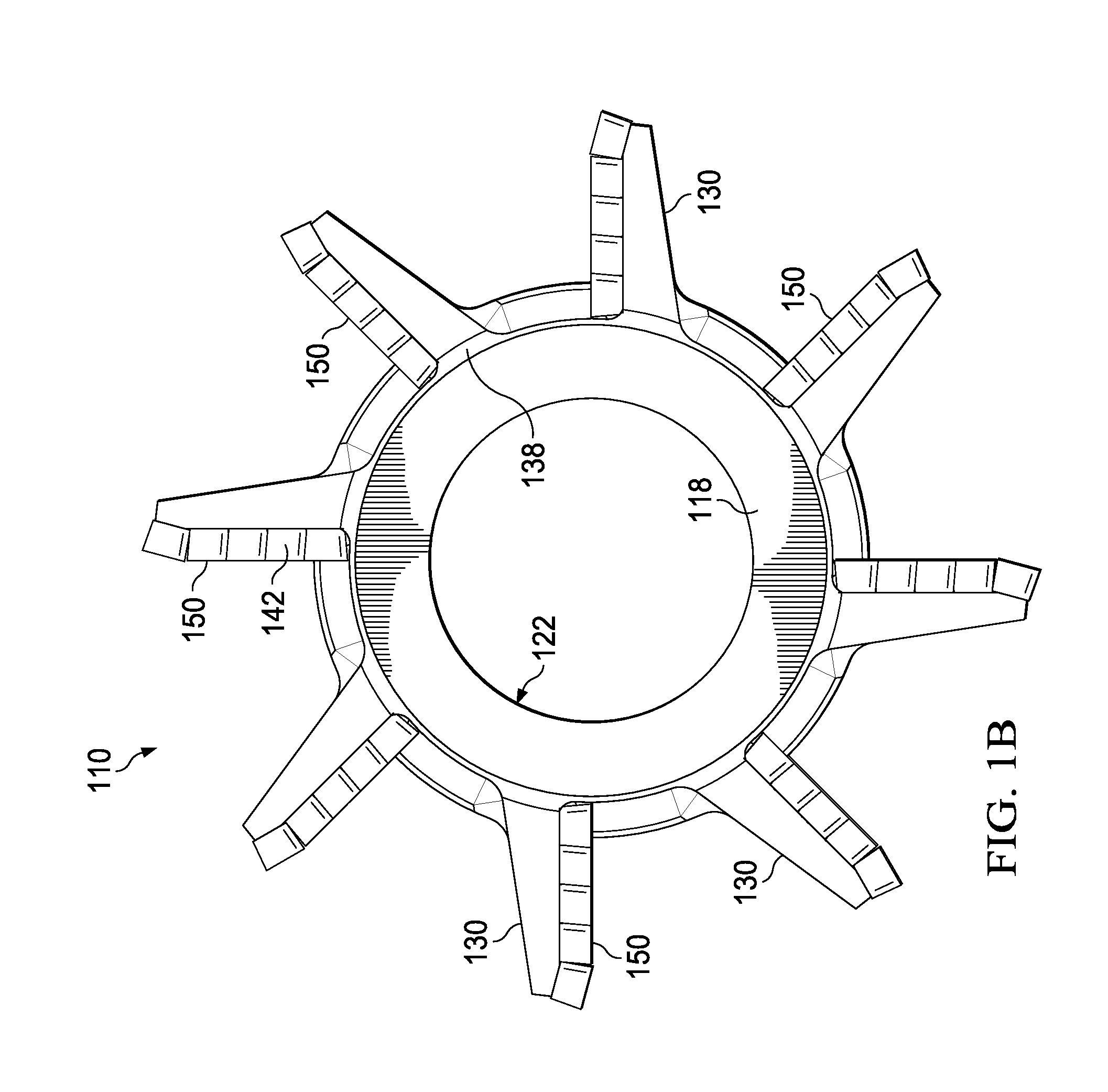Clad Hardfacing Application on Downhole Cutting Tools
a cutting tool and hardfacing technology, applied in the field of subterranean deposits recovery, can solve problems such as tool wear and tear, and achieve the effect of reducing tool wear and tear
- Summary
- Abstract
- Description
- Claims
- Application Information
AI Technical Summary
Benefits of technology
Problems solved by technology
Method used
Image
Examples
example 7
[0058] The downhole milling tool of example 1, wherein the cutting inserts have a hardness of approximately 60 HRC.
example 8
[0059] The downhole milling tool of example 1 further comprising: a plurality of cutting inserts coupled to the cladding material;[0060]wherein each cutting insert is substantially cylindrical in shape and includes a scalloped cutting surface.
[0061]Example 9. The downhole milling tool of example 1 further comprising:[0062]a plurality of cutting inserts coupled to the cladding material;[0063]wherein each cutting insert is substantially cylindrical in shape and includes a cutting surface; and[0064]wherein the cutting surface of at least one of the cutting inserts is located a distance from the mill blade greater than a distance from the mill blade to an outer surface of the cladding material.
[0065]Example 10. The downhole milling tool of example 1 further comprising:[0066]a plurality of cutting inserts coupled to the cladding material;[0067]wherein the cutting inserts are formed at least in part from tungsten carbide.
[0068]Example 11. The downhole milling tool of example 1 further com...
PUM
| Property | Measurement | Unit |
|---|---|---|
| Thickness | aaaaa | aaaaa |
| Wear resistance | aaaaa | aaaaa |
| Shape | aaaaa | aaaaa |
Abstract
Description
Claims
Application Information
 Login to View More
Login to View More - R&D
- Intellectual Property
- Life Sciences
- Materials
- Tech Scout
- Unparalleled Data Quality
- Higher Quality Content
- 60% Fewer Hallucinations
Browse by: Latest US Patents, China's latest patents, Technical Efficacy Thesaurus, Application Domain, Technology Topic, Popular Technical Reports.
© 2025 PatSnap. All rights reserved.Legal|Privacy policy|Modern Slavery Act Transparency Statement|Sitemap|About US| Contact US: help@patsnap.com



